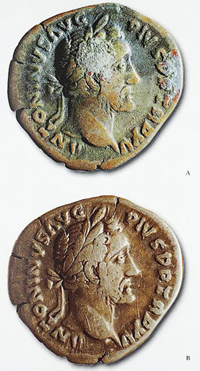Heritage for Peace: Damage Newsletter
Heritage for Peace is a non-profit organization whose mission is to support all Syrians in their efforts to protect and safeguard Syria’s cultural heritage during the armed conflict.As an international group of heritage workers we believe that cultural heritage, and the protection thereof, can be used as a common ground for dialogue and therefore as a tool to enhance peace. We call on all Syrians of any religion or ethnicity to enter into a dialogue and work together to safeguard their mutual heritage.
- Damage Newsletter – 16 May 2015 (opens as new webpage)
- Damage Newsletter – 26 April 2015 (opens as new webpage)
- Damage Newsletter – 02 April 2015 (opens as new webpage)
- Damage Newsletter – 08 March 2015 (opens as new webpage)
- Damage Newsletter – 19 February 2015 (opens as new webpage)
- Damage Newsletter – 02 February 2015 (opens as new webpage)
- Damage Newsletter – 17 January 2015 (opens as new webpage)
- Damage Newsletter – 21 December 2014 (opens as new webpage)
- Damage Newsletter – 02 December 2014 (opens as new webpage)
- Damage Newsletter – 17 November 2014 (opens as new webpage)
- Damage Newsletter – 01 November 2014 (opens as new webpage)
- Damage Newsletter – 14 October 2014 (opens as new webpage)
- Damage Newsletter – 28 September 2014 (opens as new webpage)
- Damage Newsletter – 14 September 2014 (opens as new webpage)
- Damage Newsletter – 31 August 2014 (opens as new webpage)
- Damage Newsletter – 17 August 2014 (opens as new webpage)
- Damage Newsletter – 03 August 2014 (opens as new webpage)
- Damage Newsletter – 20 July 2014 (opens as new webpage)
- Damage Newsletter – 05 July 2014 (opens as new webpage)
- Damage Newsletter – 17 June 2014 (opens as new webpage)
- Damage Newsletter – 01 June 2014 (opens as new webpage)
- Damage Newsletter – 18 May 2014 (opens as new webpage)
- Damage Newsletter – 08 May 2014 (opens as new webpage)
- Damage Newsletter – 27 April 2014 (pdf)
- Damage Newsletter – 11 April 2014 (pdf)
- Damage Newsletter – 03 April 2014 (pdf)
- Damage Newsletter – 26 March 2014 (pdf)
- Damage Newsletter – 23 February 2014 (pdf)
See the full List of Open Access Journals in Ancient Studies


























